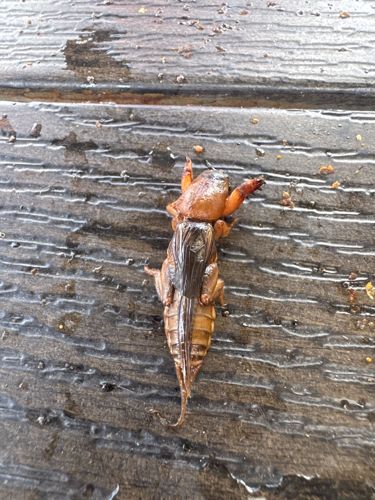Mole Cricket
Scientific Name: Gryllotalpa spp. (or other genera within Gryllotalpidae)
Order & Family: Order: Orthoptera, Family: Gryllotalpidae
Size: Typically 2.5 to 5 cm (1 to 2 inches) in length, though some species can be larger.

Natural Habitat
Mole crickets are found in various moist soil habitats, including lawns, golf courses, pastures, agricultural fields, gardens, and sandy areas near water bodies. They prefer loose, sandy, or loamy soils that are easy to burrow through.
Diet & Feeding
Their diet varies by species, but they are generally omnivorous. Many species feed on plant roots, tubers, and turfgrass, while others are predatory, eating other insects, worms, and small invertebrates.
Behavior Patterns
Mole crickets are primarily nocturnal and spend most of their lives underground. They construct extensive burrow systems for shelter, feeding, and raising young. Males of some species produce a chirping sound from their burrows to attract females. They are strong fliers but typically fly only during mating season or when dispersing.
Risks & Benefits
Potential risks include significant damage to lawns, turfgrass, and agricultural crops (e.g., vegetables, peanuts, potatoes) due to their root-feeding habits. Their burrowing activity can also disturb plant root systems. Benefits include aeration of the soil through their tunneling and, for predatory species, control of other pest insects. Some species are also a food source for birds and other wildlife.
Identified on: 8/10/2025